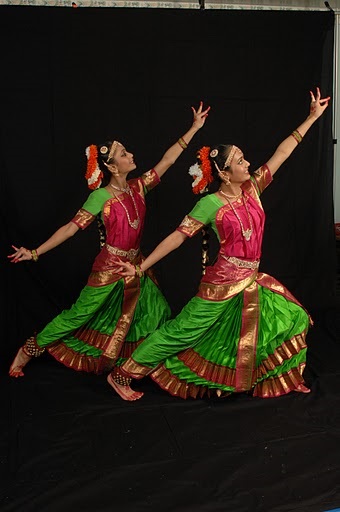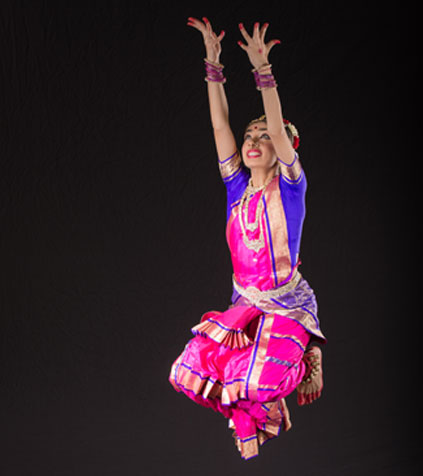“One of the most beautiful, subtle, sophisticated and graceful dance forms in the world, Bharatanatyam is performed according to the most delicate nuances of a musical piece, or a poem, through the vehicle of a body. Reflecting the principles laid down in the Natyashastra treatises, it has survived in India in all its variegated forms and moods which it has gathered unto itself throughout the centuries.” (Dr. Sunil Kothari)
The Bharatanatyam style of dancing is one of the oldest dance forms in the world and is the main form of classical dance from India. The principles and techniques have been systematized and codified around the 4th Century B.C. by Sage Bharata in the ancient treatise called the Natya Sastra. Like most art forms in India, Bharatanatyam has a deep spiritual base. The dance originally blossomed within the temple walls where the Devadasis or temple dancers dedicated their lives to dance and to God. Passages of time saw this art form emerging from the temple confines and embrace the greater freedom of the stage. What distinguishes Bharatanatyam from all the other Indian Classical dance forms is its clear lines, almost geometric; its agility and lightness together with forceful footsteps, its strength, crispness and most importantly its majesty.
The general interpretation for the name is
BHA va (expression) + RA ga (music) + TAl a (rhythm) + NATYAM (dance) = Bharatanatyam


Copyright © 2023 Green Press. All Rights Reserved || Designed and Developed by Zoom Web Media